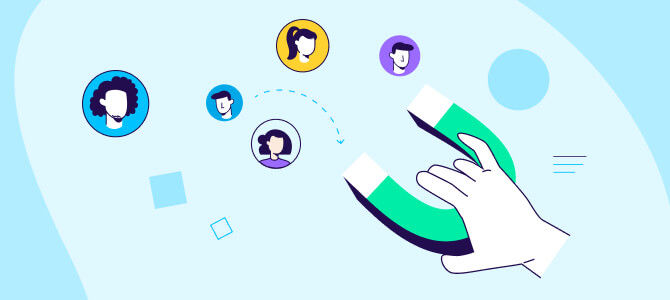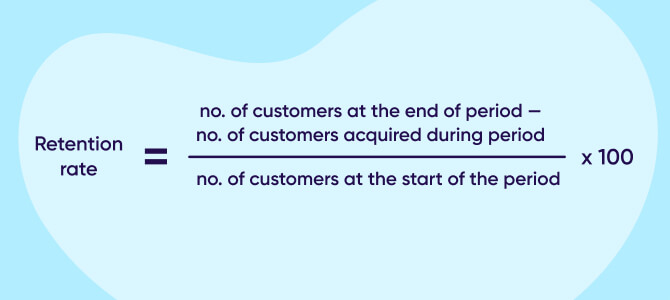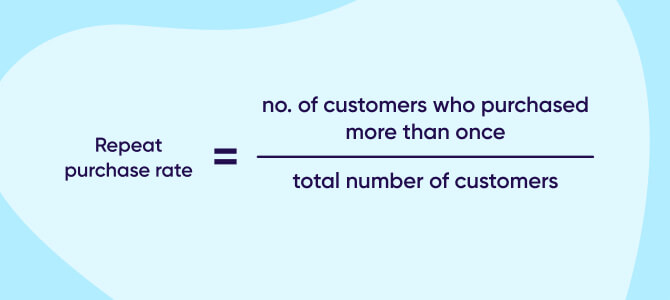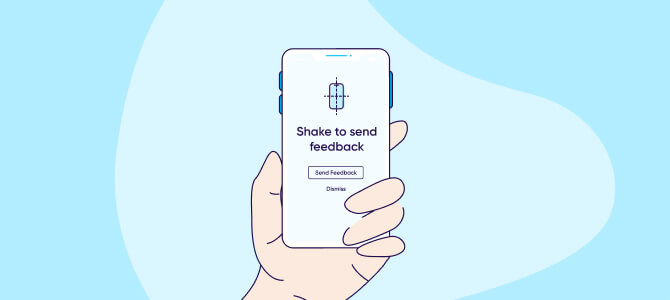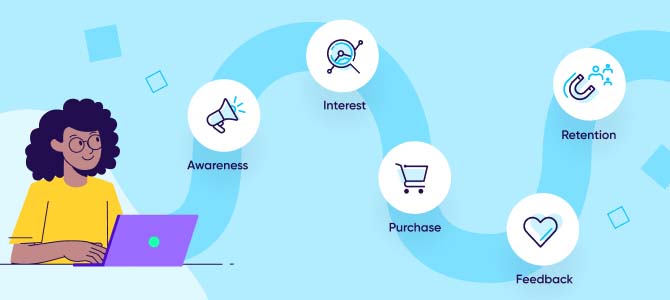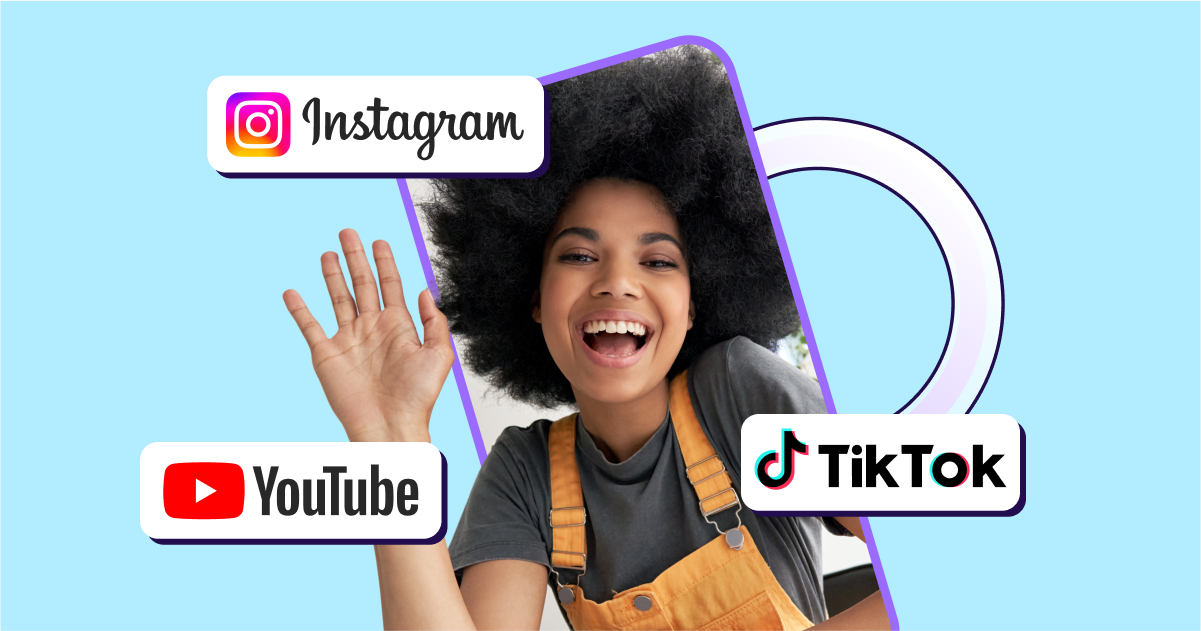Retention rate measures the percentage of customers or users your business or product retains over a given period.
What is retention rate?
Retention rate is the percentage of customers who continue to use your service or product over a predetermined period. It’s an important metric, especially for subscription-based businesses, as it shows the extent of your company’s revenue regardless of whether you gain any new clients.
Retention rate vs. churn rate
Businesses track the opposite of retention by calculating their churn rate or customer turnover.
Churn rate refers to the percentage of clients you lose in a predetermined period, whereas retention rate is the percentage of customers that sign up and stay with you. A high churn rate could mean you’re spending lots of money on user acquisition but not getting the maximum return on investment (ROI) from the user.
Retention rate vs. customer lifetime value
While retention rate measures how many customers your business can retain over a particular period, customer lifetime value (CLV) identifies how much those customers are worth over their entire relationship with your business. A high CLV indicates brand loyalty, good product-market fit, and recurring revenue from existing clients.
Why is retention rate important?
Many business analysts and entrepreneurs believe customer retention is the most critical metric to determine a company’s success. Here are several reasons why.
Retention rates can help you understand how well your product or service performs over time with each customer. A higher retention rate is better overall, as customers who continue to use your service or product provide you with greater monetization opportunities.
Allows you to determine why many customers stop using your products
Determining your company’s retention rate can also help you understand why many customers stop using your products or service and where you stand in the grander scheme of product performance.
This information can help you determine what to improve and how to extend your company’s CLV. For instance, if you have a gaming application and notice that users usually churn at the end of your onboarding period, you have identified a key area for improvement.
Helps you analyze customer service
By tracking the retention rate, you can better understand your customer service department’s performance and see how successfully they address your customers’ concerns. It can also help you gauge how well you fulfill the promises you’ve made to your customers.
Determines the effectiveness of your marketing campaign
Retention helps you understand how well your marketing campaign is doing and what strategies seem to work best for your leads.
When customers stay, you might want to invest more in your current marketing efforts. When customers churn, you may need to reevaluate your marketing campaigns and make changes.
How to calculate retention rate
Let’s explore a few ways to calculate your company’s customer retention rate.
You need three pieces of information to calculate your company’s retention rate using the basic formula:
- The number of customers at the beginning of a defined time
- The number of customers your company gained during the period
- The number of customers at the end of the time
Once you’ve determined these numbers, you can insert them into the following formula:
For example, assume that your mobile app had 1,000 users at the beginning of the first quarter and ended the quarter with 1,200 users. If you’ve gained 300 new users during the first quarter, your app’s customer retention rate would be 90%. Here’s the equation:
- Customer retention rate = [(1,200 – 300) / 1,000] x 100
- Customer retention rate = (900 / 1000) x 100
- Customer retention rate = 0.9 x 100
- Customer retention rate = 90%
Using cohort analysis
Cohort analysis refers to taking a large group of customers or users and dividing it into smaller segments (known as cohorts) that share specific characteristics over a set period. These characteristics might include a common language or region, acquisition date, or preferred items, for example.
Conducting cohort analysis doesn’t identify the causes of the fluctuations in your company’s customer retention rate. Instead, it gives you insight into customer tendencies, allowing you to better understand why they may or may not be engaging with your product or app.
There are two types of cohort analysis.
Acquisition cohorts
Acquisition cohorts analysis divides users based on when they acquired or signed up for the product. As with any other cohort, the acquisition — such as downloading an app, purchasing a product, or registering with a brand — must happen within a defined period.
Say you’re an app developer who wants to measure the success of a newly launched app. You can divide the number of downloads into cohorts for each day during launch week, then for each week during the first month.
This process allows you to determine the number of users who continue to use the application from their respective starting points. You can then see where the customer retention rate begins decreasing.
Is it after the first day of use? The first week? Or the first month? You can then narrow down the potential problems that might cause a low retention rate.
It’s important to note that the data from acquisition analysis provides only statistics or numbers. It doesn’t pinpoint the exact reason why customers are churning. This is where the other kind of cohort analysis becomes useful.
Behavioral cohorts
Behavioral cohort analysis groups your customers or users based on how they interact with your product. If you have a mobile app, for example, these behaviors may include app installs, app uninstalls, app launches, transactions, or a combination of these actions.
With behavioral cohort analysis, you can analyze the common behaviors of your most engaged users and find the sticky parts of your mobile app. Likewise, you can track cohorts during a particular period to determine how long they stay active after interacting with your app’s tricky feature.
For instance, if you’re concerned about your app’s onboarding user experience, you might conduct an A/B test to provide different onboarding experiences to various users. You can then monitor their behavior within the first week as separate cohorts. This approach lets you compare retention rates and discover if one option is more successful at engaging your users.
Calculating repeat purchase rate
Your repeat purchase rate is the backbone of your customer retention. It measures the percentage of clients willing to make a second purchase.
Determining your repeat purchase rate is a great way to evaluate how well your retention strategy is actually working. The higher it is, the more willing users or customers are to return. A healthy repeat purchase rate confirms your product or service provides great value to your customers.
A simple way to work out your product’s repeat purchase rate is to divide the number of clients who made more than one purchase during a set period by the total number of clients for that same timeframe.
Here’s the equation:
App retention benchmarks
A good app retention rate depends on several factors, including your app’s platform and industry or category. You’ll want to know your rate, because it shows the proportion of people still using your app within a set period after they install it.
One study revealed that the average retention rate across 31 mobile app categories was about 25% on day one. It then falls to about 6% by day 30. Media and professional services have the highest retention rates (84%), while the travel, hospitality, and restaurant industries have the lowest (55%).
It’s important to understand app retention benchmarks to ensure that your app remains competitive in the market. Here are the average daily app retention rates (based on day-one and day-30 retention) by platform and category:
Android
- Books
- Day 1: 29.43%
- Day 30: 8.11%
- Business
- Day 1: 16.09%
- Day 30: 6.98%
- Casino real money and sports betting
- Day 1: 28.15%
- Day 30: 12.47%
- Dating:
- Day 1: 28.30%
- Day 30: 8.78%
- Education
- Day 1: 13.93%
- Day 30: 2.69%
- Finance
- Day 1: 16.96%
- Day 30: 9.27%
- Entertainment
- Day 1: 17.10%
- Day 30: 4.65%
iOS
- Books
- Day 1: 21.83%
- Day 30: 7.74%
- Business
- Day 1: 13.88%
- Day 30: 6.46%
- Casino real money and sports betting
- Day 1: 25.05%
- Day 30: 7.56%
- Dating
- Day 1: 28.95%
- Day 30: 7.01%
- Education
- Day 1: 14.59%
- Day 30: 3.23%
- Finance
- Day 1: 21.58%
- Day 30: 10.74%
- Entertainment
- Day 1: 17.83%
- Day 30: 4.42%
App retention benchmarks can give you a starting place to understand where your mobile app falls in the market.
From there, it’s best to track your weekly, monthly, and yearly retention rate and compare it to your previous performance. This process helps you determine where your app falls short and where you have clear indications of success.
How to improve your retention rate
Improving your product’s customer retention isn’t always a quick fix. It often takes some research and diligence to identify the issues affecting your retention efforts — and then you need perseverance and patience to make the necessary changes.
Here are some ideas to help you move the needle on your product’s retention rate and improve your overall business success:
1. Use client feedback to identify weaknesses and constantly improve
When it comes to improving customer retention, user feedback is absolutely essential.
This is relatively self-evident, as how clients feel about and perceive your product ultimately determines whether they’ll become loyal customers.
To gather accurate user feedback, consider implementing satisfaction surveys or a feedback bar on your website or platform. Customers can submit feedback about why they’re using your product, what they enjoy, and what they want to see improved.
You can also include surveys when someone cancels a subscription, which can show you why users are leaving.
2. Set realistic expectations
You want to under-promise and over-deliver.
This means doing more than stated and going that extra mile to satisfy customers. It provides value for money, which is something all customers want.
When you establish a relationship with your customer or user, consider letting them know what they’re getting and what they can expect. You still need to capture their attention to close the sale, but don’t over-promise. Be realistic, and then do your best to exceed your customers’ expectations.
This approach can help create brand loyalty. And when your customers feel they can trust you, it keeps them coming back.
3. Engage with product data
One way to know how customers react to your product or service is to look at their behavioral data, which can show what features of your product drive engagement.
For instance, analyzing your music streaming app’s data may reveal that creating a playlist within the first week of onboarding triples the rate of 30-day retention. You would then use email campaigns, in-app messaging, and other available tools to drive new users to the playlist feature.
4. Improve user onboarding
Turning a new client into a long-term brand advocate begins with a smooth, seamless onboarding. That first impression can make or break your relationship with your customers, so make sure not to leave anything to chance.
One of the primary goals of onboarding is to help users competently use your product or service as fast as possible. This process prevents confusion and allows your customers to reap the benefits of your product more quickly.
So make your onboarding as short as possible. Only ask for the minimum amount of information. For instance, is there value in asking for a user’s birthday in your application? If it’s not directly contributing to the user experience, think twice.
In addition, make sure you provide simple-to-follow onboarding steps that capture the essence of what your application is all about and immediately demonstrate its value.
5. Map out your client’s journey
A client journey map is a visual representation of the customer experience with your service or product. It covers all the different touchpoints clients have with your service or product.
This visual tool outlines client motivations, key interactions along their journey, and areas of existing or potential product friction — which can be anything that limits user adoption or retention.
By understanding these events, you can better resolve current issues and make product improvements for a better client experience. The happier clients are with your product experience, the more likely they are to remain loyal and be advocates for your brand.
6. Keep your service or product top of mind
You can’t stop marketing to an individual just because they’re already a customer. In today’s marketplace where loyalty is low and competition is high, it’s crucial to stay top of mind.
You can do this via any number of client retention strategies. Some good options include running contests on social media, sending weekly email newsletters, and posting high-value content, such as podcasts, videos, or downloadable PDF resources.
7. Reward loyal clients
If a client doesn’t feel appreciated, it may only take one mistake or a “better opportunity” with a competitor for them to jump ship. That’s why it’s essential to reward clients for sticking around. A 2022 McKinsey study revealed that 64% of members of loyalty programs are more likely to purchase more frequently, and 31% are more willing to pay a higher price to stay with a brand.
Rewarding loyalty may look like grandfathering-in prices when rates increase or sending surprises or bonuses when a client places their 15th or 20th order. If you measure loyalty in terms of how long a client has been with you, you can send a free item at certain intervals, such as three months, six months, or a year.
8. Use automated emails to motivate inactive clients to take action
Another way to boost retention is by ensuring clients are as active as possible.
If a customer has remained inactive for several weeks, you can set up an automated email through your customer relationship management (CRM) software to encourage the user to take action.
For instance, if you’re tracking how users interact with your app and notice that they have only used a few of its features, an email explaining how to use other features can re-activate their interest. Emails could include educational content, such as successful case studies from other clients or best practice guides. This approach can also help improve brand loyalty, as it helps establish your brand as an industry expert.
Frequently asked questions
How do you calculate retention rate?
To calculate retention rate, you need the number of customers at the start and end of a period and the number of new customers acquired during this time. The formula is: [(Ending Customers – New Customers) / Starting Customers] x 100. This provides the percentage of customers retained.
What is the difference between retention rate and churn rate?
Retention rate indicates the percentage of customers who continue to use a service or product over a given period, while churn rate measures the percentage of customers who stop using the services within the same period. High retention typically means sustainable revenue, whereas high churn can impact ROI.
How does retention rate relate to customer lifetime value (LTV)?
While retention rate focuses on the percentage of retained customers over a period, LTV estimates the total revenue a business can expect from a single customer account throughout their relationship. High LTV implies strong brand loyalty and recurring revenue from existing customers.
Why is retention rate considered important for a business’s success?
Retention rate is vital because it reflects product or service performance, impacting monetization opportunities and business growth. It helps you identify reasons customers leave, assess customer service quality, and evaluate marketing campaign effectiveness.
What strategies can improve retention rate?
To improve retention, you should use customer feedback to identify weaknesses, map and improve customer journeys, and set realistic expectations. Enhancing user onboarding and using product data to improve personalization will help, while further strategies include keeping the product top of mind through marketing, rewarding loyal customers, and re-engaging inactive customers through automated emails.
Key takeaways
- Retention rate is a metric that measures the percentage of customers still using your service or product after a given period.
- You can calculate your retention rate by comparing the number of customers your brand has at the beginning of a given period with the number of customers your brand has at the end of that timeframe.
- A high retention rate means your existing customers value your service or product and provide a sustainable source of revenue.
- You can determine your brand’s retention rate in several ways, including using the basic formula, conducting cohort analysis, and calculating your brand’s repeat purchase rate.
- Some strategies to boost your product’s retention rate include gathering customer feedback, engaging with product data, and performing customer experience mapping. It’s also worth rewarding loyalty and ensuring your brand stays top of mind.

